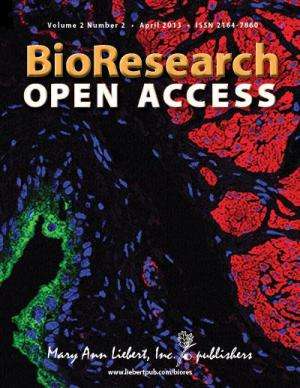©2013 Mary Ann Liebert, Inc., publishers
One of the main obstacles that stands in the way of using human hematopoietic stem cells (hHSCs) to treat a variety of diseases is the difficulty growing them in culture—they quickly die or differentiate into other cell types. A series of experiments that demonstrate the successful use of fat cells as part of a feeder layer to support prolonged growth of hHSCs in culture is reported in an article in BioResearch Open Access.
In the article "Extending Human Hematopoietic Stem Cell Survival In Vitro with Adipocytes" Dean Liang Glettig and David Kaplan, Tufts University, Medford, MA included adipocytes (fat cells) in varying amounts and locations in the feeder layers of hHSCs being grown in the laboratory. They varied the concentrations of different cell types including adipocytes in the feeder layer, comparing different amounts of adipocytes, and evaluated the effect of direct cell-to-cell contact between the hHSCs and the adipocytes in the feeder layer on the survival rate of the hHSCs.
"The ability to prolong hHSC culture in vitro not only benefits basic stem cell research, it is also an important step towards developing advanced cell therapies for future clinical use," says BioResearch Open Access Editor Jane Taylor, PhD, MRC Centre for Regenerative Medicine, University of Edinburgh, Scotland.
Provided by Mary Ann Liebert, Inc






















